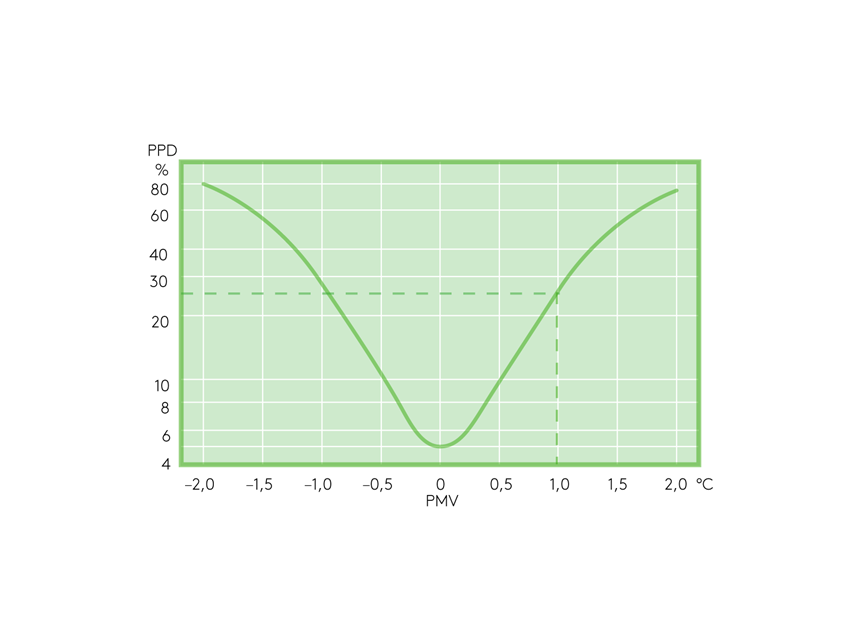The ideal temperature for a building
A comfortable thermal climate is highly individual
Based on what the occupants of a building perceive as a comfortable thermal climate, the first thing to note is that it is individual. The activities performed, clothing and our personal metabolic rate influence whether or not we perceive the thermal climate as comfortable. Anyone who ever visited a sauna or Turkish steam room and threw water on the heater will be aware that humidity affects temperature sensation, while anyone who ever braved an Arctic storm in winter knows that wind chill factor is all about how we perceive temperature. Sitting near a window with draught on a cold winter’s day or under an infrared heater provides the insight that our perception of thermal comfort is influenced by the radiation exchange with cool and warm surfaces around us. Adding to the complexity is the fact that we are also sensitive to differences in temperature between different parts of our bodies.


To measure thermal comfort
The thermal comfort expert, P.O. Fanger, conducted a lot of research on thermal comfort and created various metrics for quantifying it. One of these is predicted mean vote (PMV), which is a scale from -3 to +3 where 0 is neutral, and a negative value indicates that the climate will be perceived as being colder than ideal, and the further it is from 0, the colder the climate sensation. Conversely, a positive value indicates warmer than the neutral state. The PMV value in itself is determined from a number of different parameters such as operative temperature, activity level, clothing and air velocity.
Another value introduced by Fanger is predicted percentage dissatisfied (PPD), i.e. a metric for estimating the proportion of occupants who would rate the thermal comfort as suboptimal. The PMV and PPD values are correlates, as shown in the figure on the left. This means that if the PMV values move further away from the neutral state, more occupants will be dissatisfied with the thermal climate. Since our perception of the ideal thermal climate is individual, 0 on the PMV scale will not result in 0% PPD. Instead, we can see that a PMV of 0 corresponds to a PPD value of 5%. In sum – everyone can't be perfectly satisfied all of the time. 0 PMV may also be very difficult to achieve and cost more than it is worth. Meaning, it’s important to consider the purpose of the thermal climate when designing a building and its HVAC system.
Factors causing dissatisfaction with the thermal climate
- Draughts resulting in cooling or heating of parts of the body are common causes of dissatisfaction with the thermal climate.
- Radiation asymmetry with large temperature differences in adjacent zones may result in negative ratings of the thermal comfort. Especially if the ceiling or floor is much warmer or cooler.
- Stratification of the room air may result in a temperature gradient in the room, causing cool feet and a warm head. ISO 7730 stipulates that the temperature difference between a point 10 cm above the floor and 1.1 m above the floor should be less than 3 degrees.

Based on PMV and PPD values defined in the ISO 7730 standard, requirements can be set for the thermal climate in a building. Depending on which PPD values are set as requirements and the activity levels and clothing factors incorporated in those requirements, the resulting criteria require the operative temperature to be in the range of 20-24 degrees in winter and 23-26 degrees in summer.